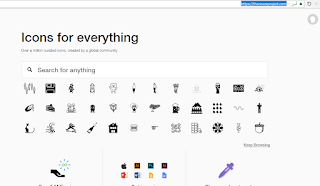Jay Gatsby
The title character of The Great Gatsby is a young man, around thirty years old, who rose from an impoverished childhood in rural North Dakota to become fabulously wealthy. However, he achieved this lofty goal by participating in organized crime, including distributing illegal alcohol and trading in stolen securities. From his early youth, Gatsby despised poverty and longed for wealth and sophistication—he dropped out of St. Olaf’s College after only two weeks because he could not bear the janitorial job with which he was paying his tuition. Though Gatsby has always wanted to be rich, his main motivation in acquiring his fortune was his love for Daisy Buchanan, whom he met as a young military officer in Louisville before leaving to fight in World War I in 1917. Gatsby immediately fell in love with Daisy’s aura of luxury, grace, and charm, and lied to her about his own background in order to convince her that he was good enough for her. Daisy promised to wait for him when he left for the war, but married Tom Buchanan in 1919, while Gatsby was studying at Oxford after the war in an attempt to gain an education. From that moment on, Gatsby dedicated himself to winning Daisy back, and his acquisition of millions of dollars, his purchase of a gaudy mansion on West Egg, and his lavish weekly parties are all merely means to that end.
Fitzgerald delays the introduction of most of this information until fairly late in the novel. Gatsby’s reputation precedes him—Gatsby himself does not appear in a speaking role until Chapter 3. Fitzgerald initially presents Gatsby as the aloof, enigmatic host of the unbelievably opulent parties thrown every week at his mansion. He appears surrounded by spectacular luxury, courted by powerful men and beautiful women. He is the subject of a whirlwind of gossip throughout New York and is already a kind of legendary celebrity before he is ever introduced to the reader. Fitzgerald propels the novel forward through the early chapters by shrouding Gatsby’s background and the source of his wealth in mystery (the reader learns about Gatsby’s childhood in Chapter 6 and receives definitive proof of his criminal dealings in Chapter 7). As a result, the reader’s first, distant impressions of Gatsby strike quite a different note from that of the lovesick, naive young man who emerges during the later part of the novel.
Fitzgerald uses this technique of delayed character revelation to emphasize the theatrical quality of Gatsby’s approach to life, which is an important part of his personality. Gatsby has literally created his own character, even changing his name from James Gatz to Jay Gatsby to represent his reinvention of himself. As his relentless quest for Daisy demonstrates, Gatsby has an extraordinary ability to transform his hopes and dreams into reality; at the beginning of the novel, he appears to the reader just as he desires to appear to the world. This talent for self-invention is what gives Gatsby his quality of “greatness”: indeed, the title “The Great Gatsby” is reminiscent of billings for such vaudeville magicians as “The Great Houdini” and “The Great Blackstone,” suggesting that the persona of Jay Gatsby is a masterful illusion.
Gatsby believed in the green light, the orgastic future that year by year recedes before us.
As the novel progresses and Fitzgerald deconstructs Gatsby’s self-presentation, Gatsby reveals himself to be an innocent, hopeful young man who stakes everything on his dreams, not realizing that his dreams are unworthy of him. Gatsby invests Daisy with an idealistic perfection that she cannot possibly attain in reality and pursues her with a passionate zeal that blinds him to her limitations. His dream of her disintegrates, revealing the corruption that wealth causes and the unworthiness of the goal, much in the way Fitzgerald sees the American dream crumbling in the 1920s, as America’s powerful optimism, vitality, and individualism become subordinated to the amoral pursuit of wealth.
Gatsby is contrasted most consistently with Nick. Critics point out that the former, passionate and active, and the latter, sober and reflective, seem to represent two sides of Fitzgerald’s personality. Additionally, whereas Tom is a cold-hearted, aristocratic bully, Gatsby is a loyal and good-hearted man. Though his lifestyle and attitude differ greatly from those of George Wilson, Gatsby and Wilson share the fact that they both lose their love interest to Tom.
Nick Carraway
If Gatsby represents one part of Fitzgerald’s personality, the flashy celebrity who pursued and glorified wealth in order to impress the woman he loved, then Nick represents another part: the quiet, reflective Midwesterner adrift in the lurid East. A young man (he turns thirty during the course of the novel) from Minnesota, Nick travels to New York in 1922 to learn the bond business. He lives in the West Egg district of Long Island, next door to Gatsby. Nick is also Daisy’s cousin, which enables him to observe and assist the resurgent love affair between Daisy and Gatsby. As a result of his relationship to these two characters, Nick is the perfect choice to narrate the novel, which functions as a personal memoir of his experiences with Gatsby in the summer of 1922.
Nick is also well suited to narrating The Great Gatsby because of his temperament. As he tells the reader in Chapter 1, he is tolerant, open-minded, quiet, and a good listener, and, as a result, others tend to talk to him and tell him their secrets. Gatsby, in particular, comes to trust him and treat him as a confidant. Nick generally assumes a secondary role throughout the novel, preferring to describe and comment on events rather than dominate the action. Often, however, he functions as Fitzgerald’s voice, as in his extended meditation on time and the American dream at the end of Chapter 9.
Insofar as Nick plays a role inside the narrative, he evidences a strongly mixed reaction to life on the East Coast, one that creates a powerful internal conflict that he does not resolve until the end of the book. On the one hand, Nick is attracted to the fast-paced, fun-driven lifestyle of New York. On the other hand, he finds that lifestyle grotesque and damaging. This inner conflict is symbolized throughout the book by Nick’s romantic affair with Jordan Baker. He is attracted to her vivacity and her sophistication just as he is repelled by her dishonesty and her lack of consideration for other people.
Nick states that there is a “quality of distortion” to life in New York, and this lifestyle makes him lose his equilibrium, especially early in the novel, as when he gets drunk at Gatsby’s party in Chapter 2. After witnessing the unraveling of Gatsby’s dream and presiding over the appalling spectacle of Gatsby’s funeral, Nick realizes that the fast life of revelry on the East Coast is a cover for the terrifying moral emptiness that the valley of ashes symbolizes. Having gained the maturity that this insight demonstrates, he returns to Minnesota in search of a quieter life structured by more traditional moral values.
Daisy Buchanan
Partially based on Fitzgerald’s wife, Zelda, Daisy is a beautiful young woman from Louisville, Kentucky. She is Nick’s cousin and the object of Gatsby’s love. As a young debutante in Louisville, Daisy was extremely popular among the military officers stationed near her home, including Jay Gatsby. Gatsby lied about his background to Daisy, claiming to be from a wealthy family in order to convince her that he was worthy of her. Eventually, Gatsby won Daisy’s heart, and they made love before Gatsby left to fight in the war. Daisy promised to wait for Gatsby, but in 1919 she chose instead to marry Tom Buchanan, a young man from a solid, aristocratic family who could promise her a wealthy lifestyle and who had the support of her parents.
After 1919, Gatsby dedicated himself to winning Daisy back, making her the single goal of all of his dreams and the main motivation behind his acquisition of immense wealth through criminal activity. To Gatsby, Daisy represents the paragon of perfection—she has the aura of charm, wealth, sophistication, grace, and aristocracy that he longed for as a child in North Dakota and that first attracted him to her. In reality, however, Daisy falls far short of Gatsby’s ideals. She is beautiful and charming, but also fickle, shallow, bored, and sardonic. Nick characterizes her as a careless person who smashes things up and then retreats behind her money. Daisy proves her real nature when she chooses Tom over Gatsby in Chapter 7, then allows Gatsby to take the blame for killing Myrtle Wilson even though she herself was driving the car. Finally, rather than attend Gatsby’s funeral, Daisy and Tom move away, leaving no forwarding address.
Like Zelda Fitzgerald, Daisy is in love with money, ease, and material luxury. She is capable of affection (she seems genuinely fond of Nick and occasionally seems to love Gatsby sincerely), but not of sustained loyalty or care. She is indifferent even to her own infant daughter, never discussing her and treating her as an afterthought when she is introduced in Chapter 7. In Fitzgerald’s conception of America in the 1920s, Daisy represents the amoral values of the aristocratic East Egg set.

















